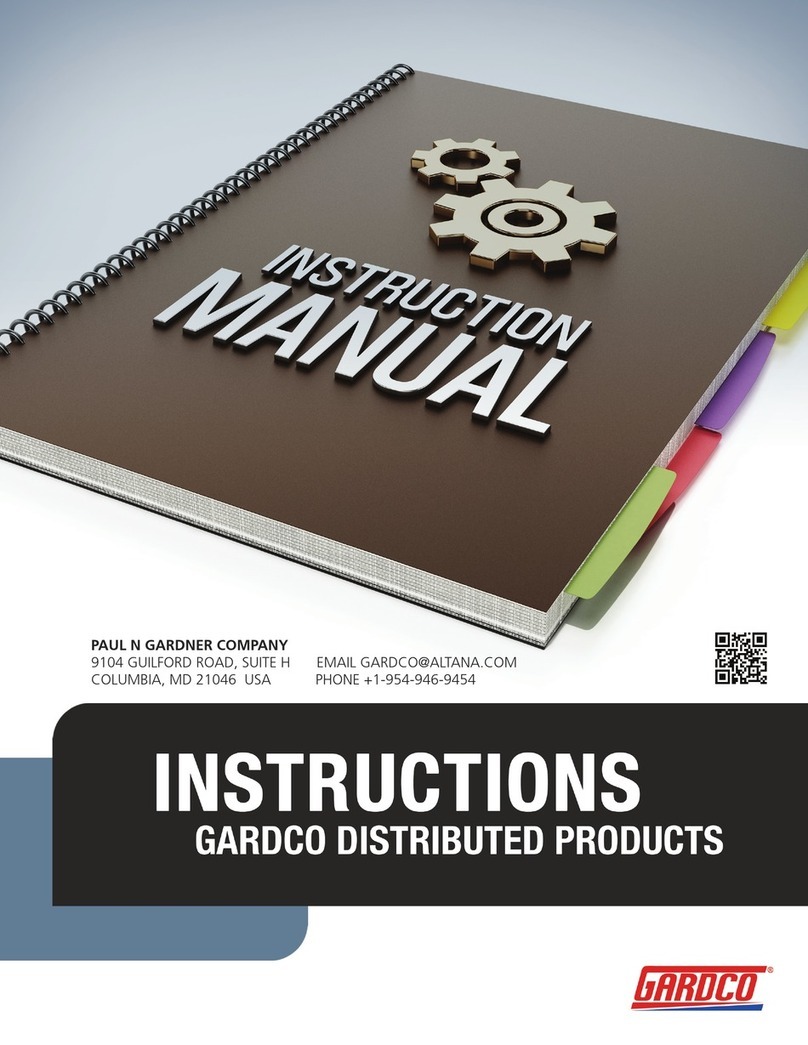
VISCOSITY
NOTICE TO ALL GARDCO ZAHN VISCOSITY CUP USERS
Zahn Signature and the improved S90/Signature Series Dip cups do not meet ASTM Specification D4212.
Modifying these cups in an attempt to comply with the standards work of the ASTM, as well as others, would be
confusing to all users of these series. There would be no easy way of knowing if any particular cup was of the
original or modified version. In addition, due to the nature of the cups, it would not have been possible to obtain
exact agreement. Not all cups in the Zahn Signature and S90 Series deviate from the evolving standard by the
same amount - the range being from near compliance to a variance exceeding a factor of two.
ZahnSignature-S90cupswillcontinuetobemadeaslongasthereisademandbythosewhohaveestablished
their procedures with the use of this instrument. Manufacturing procedures have now been improved, including
calibration with oils traceable to the National Institute of Standards and Technology, to provide even greater
uniformity of this important series of viscosity cups and to ensure agreement with earlier production. Certifi
cation with compliance to ANSI/NCSL Z540 or ISO/IEC 17025. Tables are available which convert between
Zahn Signature - S90 and the new EZ™ cups of the same number, to the nearest tenth of a second, to assist
those who need to work with both established standards.
INSTRUCTIONS FOR USE
1. Select the proper number cup to be used from the Specification Table, which is dependent on the expected
viscosity range of the material to be measured.
2. Ensure that the cup is clean and that there is no residual dried material in or around the orifice.
3. Adjust the temperature, if necessary, of the test material.
4. Completely immerse the cup into the material to be measured in a location free from bubbles or foam, hold-
ing the cup vertically by means of the stainless steel split key ring.
5. Measure and record the temperature of the material that is encompassed by the cup.
6. Hold cup vertically by inserting index finger into handle ring. In a quick, steady motion, lift the cup out of
the sample material, starting the timer when the top edge of the cup breaks the surface. During the flow
time, hold the cup no more than 6” above the level of the sample material.
7. Stop the timer when the first definite break in the stream at the base of the cup is observed.
8. Record the number of seconds of efflux time, temperature and the cup number. (Example: No. 2, EZ™ Dip
Cup, 35.0 seconds at 25.1°C.) As an option to the preceding step, refer to the conversion table furnished
with the cup and as indicated on the following page, determine the centistoke viscosity for the measured
efflux time in seconds and record this value and the measured temperature. (Example: 111.3 centistokes at
25.1°C.)
9. Promptly clean the cup unless it will be used immediately for a rerun of the same material. (Use a length of
nylon fishing line to clean the orifice.)
CARE OF CUP
EZ™viscositycups areruggedlyconstructedwith allpartsmade of stainlesssteel,except thenameplate,and
will give many years of satisfactory service requiring only thorough cleaning after each use. It is recommended,
however, that calibration of the cup be confirmed periodically, or if dropped or otherwise subjected to damage,
with the appropriate standard oil selected from the specification table. The listed viscosity value of these oils as
shown on the container label is traceable to the National Institute of Standards and Technology.
Guide for removing the G-series calibrating oil from Gardco Viscosity Cups
Any remaining material in the cup must be removed by flushing with a suitable solvent. Light naphtha, hep-
tane, octane, highly aromatic solvents, and or any other petroleum-derived hydrocarbon solvent can be used.
Varsol® is a commercial solvent that works very well for this purpose.
Completely dry the viscosity cup with a lint free cloth. Use a highly volatile solvent for a second cleaning as
since any remaining hydrocarbon solvents from the first process will evaporate quickly after the sample has been
flushed from the cup. Hypersolve, MEK and Alcohol can be used in aluminum cups and Hypersolve andAlcohol
4Paul N. Gardner • www.gardco.com • (954) 946-9454






























